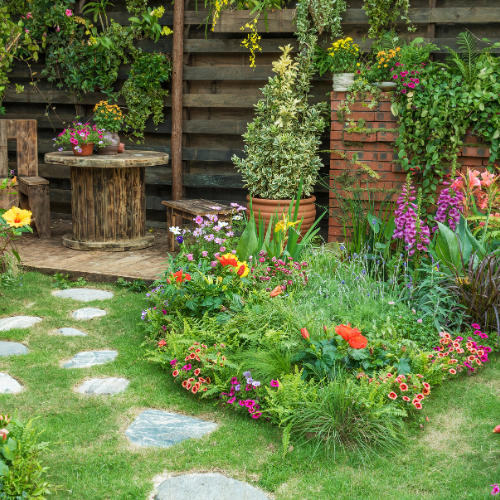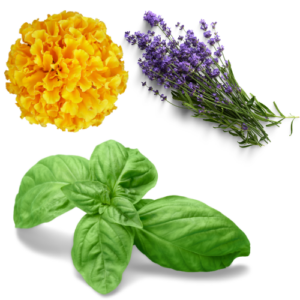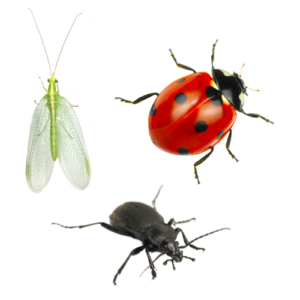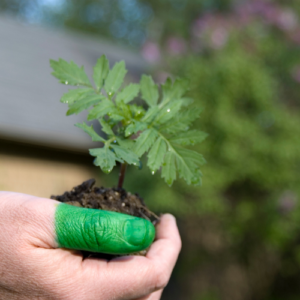
28 Aug Building a Resilient Garden
Creating a Garden That Pests Avoid
Gardening is a rewarding activity, especially in South Florida, where the climate supports a wide variety of year-round thriving plants. However, the same warm weather that benefits your garden also attracts many pests. Insects, rodents, and other critters can quickly turn your beautiful garden into a battleground. Pest Busterzz understands the challenges of maintaining a healthy garden while keeping pests at bay. This guide provides practical strategies to create a pest-resistant home garden, ensuring your plants remain healthy and vibrant.
Selecting plants that naturally repel pests is one of the most essential steps in creating a pest-resistant garden. Certain plants have properties that make them less appealing to insects and other garden invaders. For example, marigolds are known for their ability to repel aphids and mosquitoes, while basil can deter flies and mosquitoes. Lavender, with its pleasant fragrance, acts as a natural deterrent for moths, fleas, and even mice. Incorporating these pest-resistant plants into your garden can help create a natural barrier against unwanted pests.
In addition to planting pest-repellent species, consider the types of plants that are well-suited to the South Florida climate. Native plants, which have evolved to thrive in the local environment, are often more resistant to pests and diseases than non-native species. These plants are better adapted to the region’s soil, humidity, and temperature, making them less vulnerable to pest infestations. By choosing plants that are both pest-resistant and well-suited to the local climate, you can create a garden that is naturally less appealing to pests.
Balanced, Pest-Free Garden
Companion planting and maintaining healthy soil are essential strategies for creating a pest-resistant garden. Companion planting involves strategically placing certain crops together to enhance growth and deter pests. By leveraging the natural relationships between plants, you can create a balanced ecosystem in your garden. For instance, planting tomatoes alongside basil improves flavor while repelling insects like aphids and whiteflies. Similarly, garlic planted near roses can protect them from common pests. Understanding these relationships allows you to reduce the need for chemical pesticides and attract beneficial insects like ladybugs, which prey on harmful garden invaders.
In addition to deterring pests, companion planting can improve soil health and increase crop yields. Plants like legumes enrich the soil by fixing nitrogen, while sunflowers provide shade and support for climbing plants. By incorporating these techniques into your garden design, you create a more resilient and productive environment that naturally resists pests.
Healthy soil is the foundation of any successful garden. Nutrient-rich soil, enhanced with organic matter like compost, helps plants resist pests and diseases. Compost acts as a natural fertilizer, improving soil structure and promoting the growth of beneficial microorganisms that protect plants. Crop rotation is another crucial practice for soil health, preventing the buildup of pests and diseases by changing plant locations each season. Proper drainage is equally important, as overly wet soil can attract pests like slugs. Incorporating organic matter and creating raised beds can improve drainage, ensuring your garden beds support strong, pest-resistant plant growth.
Boosting Plant Health Naturally
Watering your garden correctly and encouraging beneficial insects are essential strategies for maintaining plant health and preventing pests. Overwatering leads to waterlogged soil, which attracts pests like fungus gnats and root-feeding insects. Underwatering can stress plants, making them more susceptible to pest attacks. The key is to water deeply and infrequently, allowing the soil to dry out slightly between sessions. Drip irrigation is an effective method, delivering water directly to the roots, reducing waste, and minimizing fungal disease risk. Mulching also helps retain moisture and improves soil health over time. Watering early in the morning allows plants to absorb moisture before the day’s heat, reducing the likelihood of fungal issues.
Encouraging beneficial insects is another powerful way to control pests naturally. Insects like ladybugs, lacewings, and predatory beetles feed on common garden pests such as aphids, caterpillars, and mites. Attracting these helpful insects can reduce your reliance on chemical pesticides and maintain a balanced ecosystem. Planting a variety of flowering plants that provide nectar and pollen, such as yarrow, fennel, and marigold, can draw beneficial insects to your garden. Providing habitats like insect hotels or leaving small patches of undisturbed ground gives these insects a place to live and reproduce.
Avoiding broad-spectrum insecticides is crucial for protecting beneficial insects, as these chemicals can kill both harmful and helpful species, disrupting your garden’s natural balance. Instead, opt for targeted treatments that address specific pest problems without harming beneficial insects. By fostering a healthy population of beneficial insects and practicing wise watering techniques, you can create a resilient garden that naturally resists pests. This integrated approach not only promotes plant health but also supports a thriving, balanced ecosystem in your garden.
Green Thumb Defense
Regular monitoring and early intervention are crucial for keeping pests at bay in your garden. By inspecting regularly, you can detect pest problems before they become severe. Look for signs of pest activity, such as chewed leaves, discolored foliage, or the presence of insects on plants. Early detection allows you to take prompt action using the least invasive methods possible, like handpicking pests, spraying affected areas with water, or using organic insecticidal soaps. For more serious issues, consider introducing natural predators or beneficial insects to help manage infestations. Record-keeping also plays a vital role in pest management by helping you track when and where problems occur, enabling you to adjust your gardening practices accordingly.
When pest problems arise, using organic pest control products is an effective way to protect your garden without harming the environment. Organic pesticides like neem oil, insecticidal soap, and diatomaceous earth are derived from natural sources and are less toxic than synthetic chemicals. These products target specific pests while minimizing harm to beneficial insects, pollinators, and soil health. Neem oil, for example, disrupts the feeding and reproductive processes of insects, making it effective against a wide range of pests. It’s important to apply these treatments during the early morning or late evening when beneficial insects are less active, helping to minimize unintended harm.
In addition to monitoring and organic treatments, implementing physical barriers is an excellent way to keep pests out of your garden without using chemicals. Barriers such as row covers, netting, and fences create a physical obstacle that prevents pests from reaching your plants. Row covers, for example, are lightweight fabrics that protect plants from insect pests while allowing sunlight and water to reach them. Netting can be used to protect fruiting plants from birds and small mammals, while fences can deter larger pests like rabbits or deer. Combining physical barriers with regular monitoring and organic pest control methods can create a garden that is well-protected from a wide range of pests.
By integrating these strategies—regular monitoring, the use of organic pest control products, and the implementation of physical barriers—you can maintain a healthy, pest-resistant garden. These methods not only protect your plants but also support a balanced ecosystem, ensuring that your garden thrives with minimal environmental impact.
Conclusion
Creating a pest-resistant home garden requires thoughtful planning, regular maintenance, and the use of organic, eco-friendly practices. By selecting the right plants, implementing companion planting, maintaining healthy soil, and encouraging beneficial insects, you can build a garden that naturally resists pests. Regular monitoring and early intervention, combined with organic pest control products and physical barriers, will further protect your garden from unwanted invaders.
At Pest Busterzz, we understand the unique challenges South Florida residents face in gardening and pest control. Our family-owned company is committed to helping you create a thriving garden that is both beautiful and pest-resistant. Whether you’re dealing with a specific pest problem or looking for long-term prevention strategies, our team of experts is here to provide guidance and support.
By incorporating these strategies into your gardening routine, you can enjoy a healthy, vibrant garden while minimizing the need for chemical pesticides. Together, we can work towards a more sustainable and eco-friendly approach to pest management, ensuring your garden remains a haven for plants, beneficial insects, and your enjoyment. Thank you for trusting Pest Busterzz to help you create a pest-resistant home garden.






No Comments